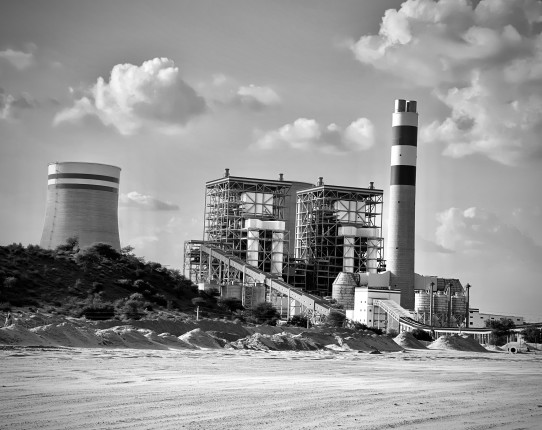China’s Belt and Road Initiative (BRI) can significantly affect the country’s domestic and overseas energy transition and decarbonization agenda. Electricity projects in China’s BRI investments, contrary to popular impressions of being part of a monolithic “project of the century,” have divergent implications for the host country’s shift away from coal-based power plants.
The “project of the century” is how China’s President Xi Jinping has described Beijing’s Belt and Road Initiative (BRI), a vast network of Chinese-backed infrastructure investments. Yet beyond the new roads, railways, and ports, BRI also is markedly shaping the energy trajectories of Global South countries.
If these Chinese investments lean green, they could catalyze an even faster global shift towards renewables. Yet China’s present energy investments continue to leave an indelible carbon-heavy mark across the region—from power plants spread across the Indonesian archipelago to mega coal bases in South Africa.
The trends toward green Chinese investment are apparent. In September 2021, Xi Jinping announced China would no longer build new coal power plants overseas. This was a milestone in Beijing’s efforts to decarbonize its BRI investments. And since Xi’s no-coal pledge, Beijing has effectively ended overseas coal-fired power projects that were in the pre-construction and pre-financial closure phases.
Yet while Chinese energy investments in 2023 also appear to be on a green streak, coal projects are still slipping in through many loopholes. This is especially the case in Indonesia, a country that hosts many Chinese-backed industrial parks which are powered by coal plants. Indeed, Chinese investors have shifted to building coal gasification projects in Indonesia, violating the spirit of Beijing’s pledge.
The parallel growth in low- and high-carbon projects is driven by political dynamics in BRI host countries—as well as Beijing’s geopolitical strategy to expand investments at any cost. As coal investments grow alongside green initiatives, BRI projects could lock many countries into a carbon-intensive trajectory, with dire consequences for the planet.
Electricity projects in Indonesia and Pakistan, two key BRI countries, illustrate the complex dynamics behind the contrasting trends in Chinese investments.
A Tale of High and Low-Carbon Nations
Perhaps the term “coal conundrum” is the best way to describe the situation in the Indonesian archipelago. Indonesia is the world’s third-largest coal producer and a major coal consumer. Yet it also has seen a significant influx of Chinese investment in its electricity sector.
From 2000 to 2020, a staggering 90% of Chinese-backed power projects in Indonesia were coal-centric. A prime example is the Jawa 7: a massive 2100 MW coal-fired power plant in Banten Province. The absence of Chinese investment in renewable projects during this period represents a glaring omission, given both China’s own domestic growth in wind and solar technology.
Embracing diversity in energy is a different picture being painted in Pakistan. Under the China-Pakistan Economic Corridor (CPEC), China has for years invested heavily in coal to bring power to 33% of the population who lacked electricity. Notably, before the ban, Chinese companies completed the first ultra-supercritical air-cooled coal-fired power plant in Pakistan, which Chinese news media billed as eco-friendly. The 300 MW coal-fired power plant in the port of Gwadar also has been in planning for 7 years—and China and Pakistan finalized an agreement to build it in April 2023.

A Coal Fired Power Plant of 1320 MW Rising in the Middle of the Thar Desert, Sindh Province, Pakistan.
But Islamabad has started to push for low-carbon clean energy. The Quaid-e-Azam Solar Park in Punjab, spanning 500 acres and boasting a capacity of 100 MW, is a beacon of renewable hope. This project, along with others like the Sukkur Barrage Wind Farm, showcases the diverse low-carbon energy palette that Chinese investments could bring to Pakistan.
Digging Deeper: Why Are Indonesia and Pakistan Different?
The reasons behind the differences in energy pursuits in each nation are rooted deeply in their respective domestic landscapes and relationships with Beijing. In Indonesia, coal interests have significant power. On the other hand, Pakistan sees strategic importance in developing a diverse energy portfolio.
The coal industry’s influence on Indonesian politics cannot be understated. The country’s decentralized environmental governance regime, combined with the coal industry’s political clout, has created a favorable environment for coal projects. Local governments, susceptible to the influence of Chinese coal companies, often approve coal power plants without stringent environmental checks. For instance, the Celukan Bawang coal plant in Bali, invested by China Huadian Engineering, faced accusations from local NGOs for not conducting a comprehensive Environmental Impact Assessment on its greenhouse gas emissions.
One might see Pakistan sailing in a similar direction. Its business environment for renewable energy (RE) isn’t particularly favorable, and foreign investors often hesitate to enter the country’s RE market due to perceived risks.
Yet Islamabad has strategically courted Chinese backers to finance wind and solar projects in Pakistan. It is a good strategy. The Chinese state, prioritizing its geopolitical influence, often overlooks the commercial risks associated with such investments. For instance, this trend has been evident in the way Islamabad and Beijing have collaborated on the CPEC. Between 2013 and 2015, several wind farms in Pakistan were rebranded as part of the CPEC, which made it easier for these projects to receive loans and insurance from Chinese financiers.
Accelerating Clean Energy on the Belt and Road
China’s coal ban has not yet halted fossil fuel investments in the Global South. Therefore, it is imperative for the Chinese government to push harder for early coal retirement in BRI countries.
There are two avenues that Beijing could take to pursue this goal. The first is to collaborate with international financial institutions. In November 2022, several Western countries pledged to mobilize $20 billion to facilitate the energy transition in Indonesia. This act may create opportunities for Chinese developers to collaborate with multilateral development banks and Western financiers to retire Chinese-backed coal plants in Indonesia early.
The second option is to allow BRI countries to exchange debt relief for early coal retirement. Researchers from Boston University’s Global Development Finance Center suggest how the Chinese government could adopt debt-for-climate swaps with BRI countries with a high debt burden. This strategy seems to be especially promising for Pakistan, a country that is facing a sovereign default.
This blog is part of the Wilson Center-East-West Center Vulnerable Deltas project, which is supported by the Luce Foundation.
Chuyu Liu is an assistant professor in Political Science at the University of Amsterdam. His research focuses on ethnic conflict and the political economy of development. His current research project examines the political economy of China’s Belt and Road Initiative. His work has appeared in Energy Policy, Environmental Politics, International Studies Quarterly, the Journal of Comparative Economics, the Journal of East Asian Studies, Security Studies, and The China Review.
Top Photo: Conveyor loading coal barge in the Upper Mahakam Delta, Indonesia, photo courtesy of hilmawan nurhatmadi.
Second Photo: Courtesy of IamFaizan/Shutterstock.com.
Sources: Bloomberg; China Dialogue; China Global South Project; The Diplomat; Environmental Politics; Financial Times; Mongabay; New York Times; Power Technology; Reuters; Science; Washington Post; Xinhua

 But Islamabad has started to push for low-carbon clean energy. The Quaid-e-Azam Solar Park in Punjab, spanning 500 acres and boasting a capacity of 100 MW, is a beacon of renewable hope. This project, along with others like the Sukkur Barrage Wind Farm, showcases the diverse low-carbon energy palette that Chinese investments could bring to Pakistan.
But Islamabad has started to push for low-carbon clean energy. The Quaid-e-Azam Solar Park in Punjab, spanning 500 acres and boasting a capacity of 100 MW, is a beacon of renewable hope. This project, along with others like the Sukkur Barrage Wind Farm, showcases the diverse low-carbon energy palette that Chinese investments could bring to Pakistan.
 A Publication of the Stimson Center.
A Publication of the Stimson Center.







